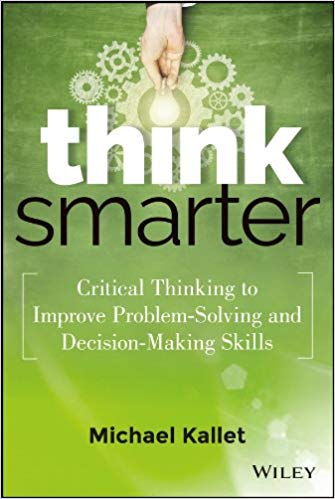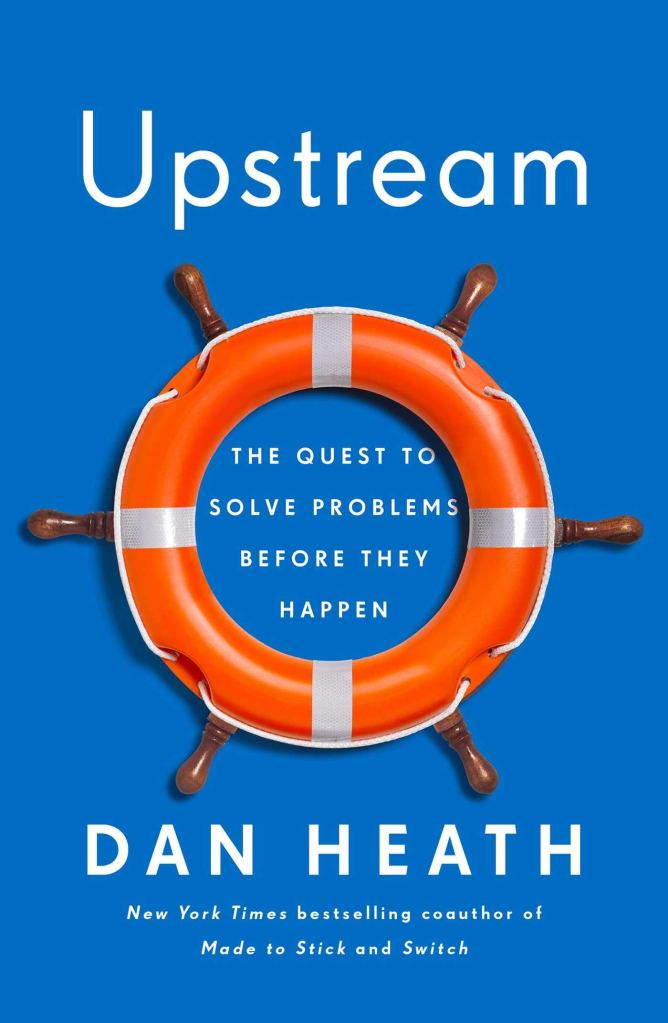What’s at stake if teams do a poor job of solving problems? From a long list of potential answers, four stand out:
- Lost time: Poor team problem solving simply burns more time. It may be more time in a meeting itself, because there were no collaboration guidelines. Perhaps it’s lost time outside of the meeting in hallway conversations, because ideas weren’t fully explored or vetted.
- Dissipated energy: Poor team problem solving leaves questions unanswered and half-baked solutions in the atmosphere. We don’t know exactly where we stand or what we’ve decided. The thought of revisiting an unfinished conversation itself is an unwelcome burden.
- Mediocre ideas: Poor team problem solving fortifies our weakest thinking. Innovation is something we read about but never experience. We cut-and-paste the ideas of others, because we don’t know how to generate our own. We traffic in good ideas and miss great ones.
- Competing visions: Poor team problem solving invites an unhealthy drift toward independence. No one has the conscious thought that they have a competing vision. But in reality, there are differences to each person’s picture of their future. It’s impossible for this divergence not to happen if there is no dialogue.
So, how do you start to create the dynamic of collaborative problem solving?
THE QUICK SUMMARY – Think Smarter: Critical Thinking to Improve Problem-Solving and Decision-Making Skills by Michael Kallet
Think Smarter: Critical Thinking to Improve Problem-Solving and Decision-Making Skills is the comprehensive guide to training your brain to do more for you. Written by a critical thinking trainer and coach, the book presents a pragmatic framework and set of tools to apply critical thinking techniques to everyday business issues. Think Smarter is filled with real world examples that demonstrate how the tools work in action, in addition to dozens of practice exercises applicable across industries and functions, Think Smarter is a versatile resource for individuals, managers, students, and corporate training programs.
Think Smarter provides clear, actionable steps toward improving your critical thinking skills, plus exercises that clarify complex concepts by putting theory into practice.
Learn what questions to ask, how to uncover the real problem to solve, and mistakes to avoid. Recognize assumptions your can rely on versus those without merit, and train your brain to tick through your mental toolbox to arrive at more innovative solutions. Critical thinking is the top skill on the wish list in the business world, and sharpening your ability can have profound affects throughout all facets of life. Think Smarter: Critical Thinking to Improve Problem-Solving and Decision-Making Skills provides a roadmap to more effective and productive thought.
A SIMPLE SOLUTION
Have you ever heard a colleague utter the words, “I don’t have to time to think!” If you’re honest with yourself, you’ve probably said them yourself.
This cliche is at the center of problems for organizations around the world, regardless of their size and complexity.
The reality is, that thinking is the most important driver in problem-solving, decision-making, and creativity – no organization can do without it.
According to author Michael Kallet, thinking is the foundation of everything you do, but we rely largely on automatic thinking to process information, often resulting in misunderstandings and errors. Shifting over to critical thinking means thinking purposefully using a framework and toolset, enabling thought processes that lead to better decisions, faster problem solving, and creative innovation.
Critical thinking is a purposeful method for enhancing your thoughts beyond your automatic, everyday way of thinking. It’a a process that uses a framework and a tool set.
Michael Kallet
The benefits of critical thinking result from changing the way you look at issues, organizing your thoughts, and incorporating others’ thoughts. It simulates new perspectives and prevents distorted views of a situation. As a result, your problem-solving and decision-making skills are enhanced.
The critical thinking process framework, which provides tools and techniques, consists of three components: clarity, conclusions, and decisions.
Clarity
The single most important reason why head scratchers – projects, initiatives, problem solving, decisions, or strategies – go awry is that the head scratcher itself – the situation, issue, or goal – isn’t clear in the first place. Clarity allows us to define what the issue, problem, or goal really is.
Conclusions
After you are clear on what issue you must address, you have to figure out what to do about it. Conclusions are solutions and a list of actions (to-dos) related to your issue.
Decisions
Once you have come to a conclusion about what actions to take, you have to actually decide to take the action – and do it.
Most people combine conclusions and decisions when they’re asked about problem solving or decision making, saying, “I need to decide what to do.” However, it’s important to separate conclusions and decisions, because the thinking processed for each are very different.
The space around clarity, conclusions, and decisions is filled with discovery, information, and ideas. These three concepts include asking questions, exploring ideas, listening to responses, and conducting research.
Michael Kallet, Think Smarter: Critical Thinking to Improve Problem-Solving and Decision-Making Skills
A NEXT STEP
As noted in the Quick Summary above, author Michael Kallet has provided many tools and suggestions throughout Think Smarter that will help you grasp and apply the critical thinking process framework. Here is just one that most leaders practice daily, yet hardly think about: email.
Start critical thinking practice with inspecting and writing emails. Not only is this easy and good practice, but there’s also an important side advantage. Write your email; then before you hit Send, ask, “Is what I’m about to send clear? Could the recipient misinterpret what I’ve written?” You’ll reap three benefits from this.
First, you’ll find your emails are shorter, because clarity often takes fewer words.
Second, your thoughts will be clearer and better organized.
Third, and most important, your emails will be more easily understood, resulting in potentially huge productivity gains.
What happens if you send an unclear email to someone? The recipient will respond with a question, which you’ll then have to answer. The result is at least three emails generated instead of one. Going further, consider how many emails would be sent around if you copied five people on an unclear email. Even worse, what happens if you send an unclear email out, and instead of asking questions, people just start to do their own interpretations of your email.
Imagine the productivity gains of critically thinking about just your most important emails every day.










